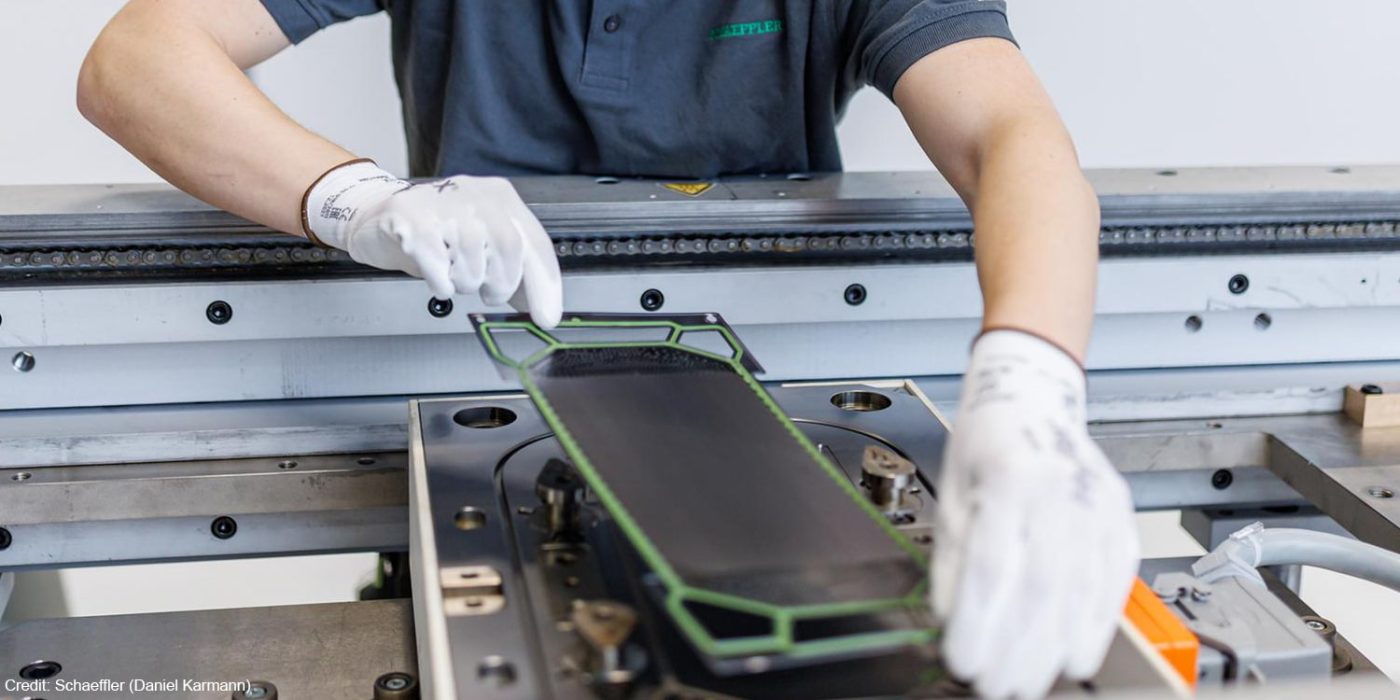Schaeffler improves bipolar plates for fuel cells
German automotive supplier Schaeffler has introduced a new generation of bipolar plates for PEM fuel cells. The plates’ design is optimised for large-scale production, and they use a new coating process for a particularly long service life.
According to Schaeffler, stacks equipped with these plates also achieve a power density of around 20 per cent higher than stacks with the plates of the previous generation. Schaeffler is currently producing the plates for prototypes and small series for vehicle manufacturers on a pilot plant in Herzogenaurach. From the beginning of 2024, the bipolar plates will be manufactured in the Innoplate joint venture, founded with Symbio in Haguenau, France, in significantly larger quantities.
Bipolar plates have an important function in the fuel cell: they separate and distribute the process gases and the coolant and remove water produced by the chemical reaction. The optimisation is mainly about making the plates smaller and lighter while improving the properties for the actual task. For a fuel cell stack for vehicles, several hundred bipolar plates and membrane electrode units (MEA) are alternately layered on top of each other. In this composite, the plates account for up to 80 per cent of the stack weight and up to 65 per cent of the stack volume. According to Schaeffler, up to 400 such cell composites are stacked for a 140 kW stack.
“Schaeffler has developed an innovative design that makes optimal use of the plate’s surface area,” says Jochen Schröder, head of the E-Mobility division at Schaeffler. “The finer and more precise the structures on the bipolar plate, the more efficient the plate is.” According to the press release, this is how the supplier achieves a power density of 4.6 kilowatts per litre for the fuel cell stack, based on the stack volume, including the end plates and the bracing.
However, “the finer and more precise the structures on the bipolar plates”, the more complex the production usually becomes. Here, Schaeffler has “designed from the ground up for industrialisation at large scale – an approach known as design for manufacturing (DFM).” Combined with the company’s metal stamping and forming expertise, fine structures can thus be embossed on 50 to 100-micrometre thick plates even in large-scale production processes.
In addition to production and energy density, Schaeffler sees the coating system as “another unique feature.” The supplier has developed several high-performance coating systems for bipolar plates, which – depending on the customer’s wishes – are aimed at particularly high service life requirements, the lowest possible CO2 footprint or an optimised price-performance ratio. The coating systems are applied using the physical vapour deposition (PVD) process, which has been adopted from the production of highly stressed valve train components, proven millions of times over, and refined even further.
“Thanks to our capabilities in surface technology, we are able to offer each customer an application-specific coating solution. This means we can meet each customer’s requirements in terms of balancing cost, performance, and manufacturing-related CO2 emissions,” says Schröder.






0 Comments